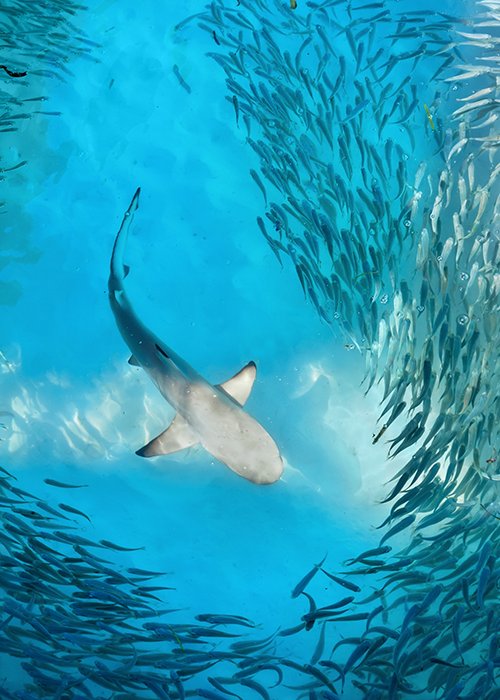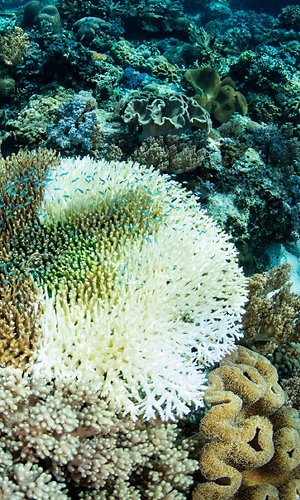Summer is finally here! As usual, we have waited for it all year long and now it is time for vacation and the sea. At the sea we definitely will not miss out on delicious fish dinners, but what lurks for us and for the environment behind an enticing dish? Read on and you will find out…
Voice search

Who’s coming to dinner
Help, there is a shark in my hamburger!
When we think about the word “shark” what comes to our mind are the images that made the white shark so notorious in the famous film “Jaws”. Truth is that their bad reputation as man eaters, is a distorted version of the facts given by the media. In the past hundred years in the Mediterranean Sea there have been only 18 shark attacks on humans, of which five took happened in Italy. It seems, on the contrary, that they are one of our main dishes and have therefore become critically endangered. Different Pacific island populations have always used the skin, teeth and flesh of these animals, but the fishing problem is a relatively new one arising from the modern fishing industry and its excessive exploitation of this species. Many products are being obtained from sharks, but the problem is the increase in the use of their flesh for nourishment as a substitution for the decreasing tuna and swordfish. Traditionally shark flesh was consumed dried or smoked; but now it is widely available on the fish market in its fresh form, where it is often called by other names that contribute to confuse the consumer on its real identity (dogfish is a shark!). Even you have probably eaten shark without knowing it, in fact, it is an ingredient in almost every fishburger on the market (think about this the next time you have a fast food meal!). Very often when you order a swordfish steak at a restaurant instead they may serve you some kind of shark, such as dogfish. Dogfish flesh is not as choice and obviously less expensive compared to swordfish. So how can we keep from being duped? It is very easy: dogfish is a shark and it has a coarse crenated skin (it was even used as an abrasive), as opposed to swordfish which, being a bony fish, has smooth skin covered by the typical scales that we all know. With the dorsal and pectoral fins you can make the famous shark fin soup, considered to be a very exclusive ancient Chinese dish which is now known worldwide. Shark fins are used in this soup mainly for their collagen fiber content which actually doesn’t give much flavor but contributes to make the soup more consistent; this is why they must add more flavorful ingredients, such as chicken, crab and shellfish. In the old days this specialty was exclusively for the rich upper classes, because it was very expensive to produce. Certainly it wasn’t easy to catch large numbers of sharks and also the long cooking procedures were difficult in those days. Unfortunately today’s modern fishing techniques enable to fish large quantities of sharks in less time. Commercial value of the shark’s fins is greater than that of its flesh and this led to a cruel useless procedure: when the shark is captured and pulled on board, its fins are cut off while it is still alive and then it is thrown back in the water where it is left to die of suffocation or hunger (finning). In this way 95-99% of the animal goes to waste, because for who does this kind of fishing, it is more convenient to fill the hold with nothing but fins or with more valuable fish such as tuna and swordfish, than taking up the space for shark meat which is edible but not choice. According to the IUCN the percentage of North East Atlantic and Mediterranean sharks included in the red list of endangered species, is the highest one on earth. Of all the species that have been studied, almost one third is endangered because of: their slow population growth, the low birth rate, following long pregnancies or incubation, the habit of many species to gather in large groups during their reproductive period (which makes them more vulnerable to mass fishing), the presence of “nursery areas” (where sharks go to give birth) at risk of environmental deterioration and pollution. All these biological and behavioral characteristics have contributed towards including this group of fish, which has existed for millions of years, in the endangered species list.
What is there in the plate?
Very often restaurants tend to substitute lobster with crawfish. Instead they belong to two totally different species which are not related to each other. Remember that crawfish don’t have nippers, while the lobster’s first three pairs of limbs do and the first pair are particularly large! However the commercial value of crawfish flesh is less than that of lobster; so beware of swindles, particularly if the restaurant serves you crackers to open the nippers with.
Killer fish
Some fish called puffer fish have the unique ability to blow up as balls by swallowing water, to ward off predators. Following this “transformation” the predator feels confused and not only that: try to take a bite at a ball , it certainly is not easy, its round shape keeps the fish from getting bitten! The entrails and gonads of the puffer fish contain a deadly neurotoxic poison, the tetrodotoxin which, if ingested , can kill even a man within minutes. This poison can be eliminated only with complicated and not always efficient gastronomic techniques. In Japan it is considered to be a very choice dish and is called “fugu”. To cook this very poisonous fish one must attend a special school which then issues a kind of license that certifies that the fish is no longer poisonous. In spite of all these precautions, every year in Japan dozens of people die after eating the famous fugu! We westerners surely wonder why one must risk one’s life just for the sake of tasting some fish, but to the Japanese eating such a dangerous dish is probably like playing “Russian Roulette”. You never know if you will be able to leave the restaurant alive!
The napoleon: a commander that gets little respect
The most famous tropical labroid is known as “Napoleon” because of the bulge on its forehead which reminds us of the hat of the famous historical character. Until a few years ago, divers would feed them hard boiled chicken eggs in order to get close to them. This terrible habit made these fish become ill and many of them died. Some years ago the Napoleon fish was the most sought after dish on Hong Kong restaurant menus. Lately it has become scarce because of excessive fishing and so it is very expensive. On the “Jumbo” restaurant ships it can cost over 300 dollars per kg . It’s fleshly lips are considered to be such a delicious aphrodisiac that they can cost over 400 dollars. The fishing technique for this wonderful animal, which can reach 230 cm in length and weigh 190 kg, is really awful: after being cornered in a reef , two fishermen break all the corals around it to get to it and place a high dose of cyanide on its nose, then they drag it to shore killing endless small animals in the process. Obviously this fishing method kills all other organisms within a few square meters of the victim.
Delicious plates
Some Microcosm species, the ascidia, commonly known as sea potatoes, are edible: you cut the tunic, which is usually encrusted by other organisms, and you extract the part that you can eat, which is in fact the bright yellow mass of entrails. This is the reason why this animal is also called “sea lemon” or “sea egg”. In France it is a very sought after dish by the name of “violet”.
A taste for sea urchins
Who has never eaten a sea urchin? The sea urchin is really delicious and is considered to be a “tidbit“ which can satisfy even the most demanding gourmand. Some “taste experts” claim that its aroma encloses the smell perception of deep sea algae. The sea urchin of culinary interest is the Paracentrotus lividus, better known as female sea urchin, as opposed to the Arbacia lixula, or male sea urchin. Actually this classification is extremely wrong because both species are hermaphrodites (which means that each animal has both sexes at the same time). The sea urchin can be eaten by extracting the inner part with a small spoon and combining it with local products (in Salento, for example, you eat it with bread and “taralli”), or as a sauce on local pasta dishes (in Sardinia they have the famous “sea urchin fusilli”), or else thanks to its lively colors (red, coral, orange and okra yellow), it can be used as a decoration to highly sophisticated dishes for very demanding gourmands. Its deliciousness is irresistible, but have you ever wondered what that very tasty orange-yellowy mass that you take out of the sea urchin actually is? I must warn you that if you read on the next time you may not eat this dish with quite the same enthusiasm as you did before… Good, you are brave! Let’s see if you will have the gall to eat it again after this explanation… It is not the eggs that are edible, as many believe, but the gonads, or rather the whole reproductive system which, being sea urchins hermaphrodites, produces both sperm and eggs.
Sauted fish
Dolphin for lunch? No thank you, we would answer with horror! In western cultures dolphins have long been considered a nice intelligent animal which belongs in the same category as our “pets”, thanks to recent studies that have proved to us that it is an extraordinarily intelligent being with complex social structures among beings of the same species. However we should not be surprised to hear that its flesh is used for nourishment in many parts of the world including Italy where it was quite popular in the past. In Liguria and Sardegna dolphin “musciame” also called “mosciamme, mosciammu” was a very popular traditional dish. It was a kind of dried fillet made from parts of dolphin that was shot with a rifle and left to drown. This typical dish was popular in the XII century on board the galleys (war and freight ships used in the Mediterranean Sea) where it was eaten with biscuits dipped in water or vinegar and vegetables. Fortunately nowadays you can find a version of musciame made with tuna and other fish, because dolphin fishing in Italy is forbidden so our dolphin “friends” can continue to swim safe and free in our seas. However, in Italy there still are some restaurants where the law is being ignored. Refusing to purchase and consume this dish in restaurants where it is being offered is a responsible attitude that we must all assume. This is a clear example of how we can prove that we are civilize even through our eating habits!
Written by Tiziana Bosco
Read also...

A turtle’s life



